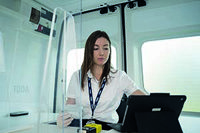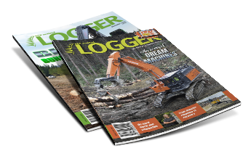
Despite the forestry and logging industry’s proactive approach to health and safety, it remains an industry with heightened risk. People must work on steep slopes, with tall heights, and with heavy machinery, making worker safety absolutely paramount. Sadly, according to WorkSafe, the forestry industry has had, historically, one of the highest rates of fatality among others in New Zealand.
Having worked with the forestry industry for over 15 years, I understand the unique challenges it faces, as well as the commitment of many forest owners to mitigate risks in work sites. One of the safety-related challenges is that the use of illegal drugs is not uncommon among workers. In fact, according to the NZ Drug Foundation, 15.3% of the adult population in New Zealand has used cannabis in the past year, that is around 635,000 adults. In addition, 1.2% of Kiwi adults (around 40,000) have consumed amphetamines.
Furthermore, COVID infections and lockdowns have left many workers self-isolating for weeks. Substance use increases with prolonged time away from work. It’s a bad coping mechanism for dealing with challenging situations. Unfortunately, workers high on drugs or suffering from their after-effects are more likely to be involved in workplace incidents.
Now that we’re past the Omicron peak, it is an opportune time to restart with a safer forestry working environment.
Health and safety collaboration in Northland
The most important decision for forestry owners and managers is to take a united stance towards health and safety. One of many admirable examples within forestry I have seen is in Northland, where nearly all forestry operators and contractors get together every two months for a few hours’ long learning session. The safety committee shares case studies, new knowledge, and best practices about health and safety. Safety-related organisations, such as WorkSafe, ACC and TDDA, are invited along every time. Everyone comes in with an objective to enhance safety in the workplace.
During these meetings, TDDA shares overall drug testing statistics for Northland forestry operators. This includes the types and amounts of substances found in drug tests and wastewater results, as well as drug trends to be aware of. We also share the drug test data for each of the management companies with their respective leaders. With these insights, leaders can champion targeted changes in their businesses to mitigate risks.
Apart from the bimonthly forum, I am aware that some exemplary forestry operators continually share case studies with their counterparts whenever a workplace incident happens, so that teams around the country can learn from each other. Prior to this, it had been common for teams to feel embarrassed about a workplace incident. But you learn best from mistakes – by sharing the knowledge, everyone can learn. Their willingness to share has no doubt raised the awareness of safety in forest sites.
Because of the Northland forestry management groups’ commitment to health and safety, their overall failure percentage rate for random drug testing conducted through TDDA has gone down significantly over the past years, from the teens to the low single digits.
Workplace drug testing effective...






